Get to Know Lake Lanier
An introduction to the playing field for stop No. 3 of the 2018 FLW Tour
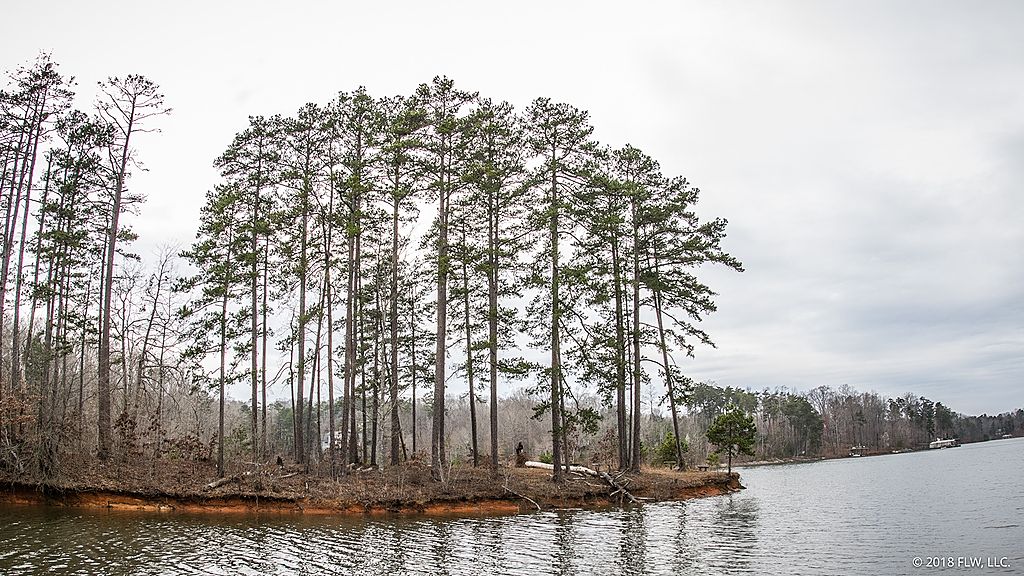
Sprawling through the foothills of the Appalachians north of Atlanta, Lake Lanier is one of the best spotted bass fisheries in the East and a tremendous playing field for the third stop of the 2018 FLW Tour.
High-level FLW tournaments have most often hit Lanier in the summertime when the weather is sweltering and the lake is clogged with pleasure boats. With the Tour event this week landing during the prespawn, fishing fans can expect a lot of similarities between this tournament and recent prespawn showdowns on Lake Hartwell.
The tournament kicks off at Laurel Park in Gainesville, Ga., on Thursday, but practice has already produced epic catches, and that trend should continue into the tournament.
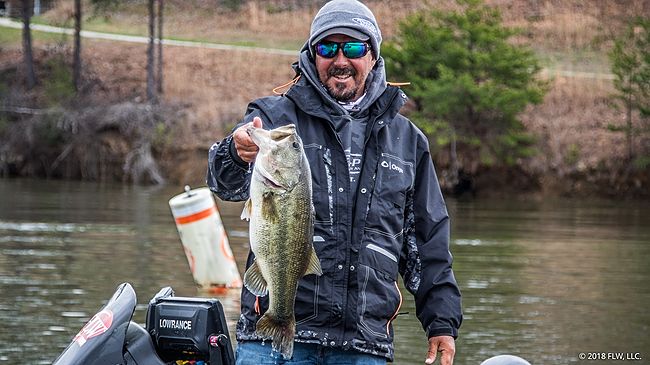
Though Lanier is home to some impressive largemouths (like any lake in the South), it’s calling card is the burgeoning population of spotted bass that have grown big and fat on blueback herring in recent years. First established sometime in the early 2000s, blueback herring have transformed a number of spotted bass fisheries in the Southeast, and Lanier is no different. Considering the time of year and the stage of the bass, it’s likely that we could see one or more 20-pound limits of spotted bass hit the scale this week.
The divide between spotted bass and largemouths is a hot topic, if only because it’s fun to think about one species triumphing over the other. In reality, Lanier local and veteran tournament angler Patrick Bone figures that a combo platter will play well.
“Because of the conditions with this front coming in, it’s going to be high-pressure and cold, and historically on this lake with conditions like that those largemouths don’t bite,” says Bone. “There are times you fish them and times you don’t, but I don’t think this week is one of those times.”
Of course, there’s a difference between dedicating a day to largemouths and catching some by accident, or switching to largemouths after sacking up a 15-pound limit of spots.
“Normally this time of year how you catch a really big bag is to have a mixed bag – with three big spots and two big largemouths,” relays Bone. “A lot of times this time of year you don’t know if you’re going to catch a spot or a largemouth with how you fish. On docks and creek channels and that kind of thing you’re liable to catch both.”
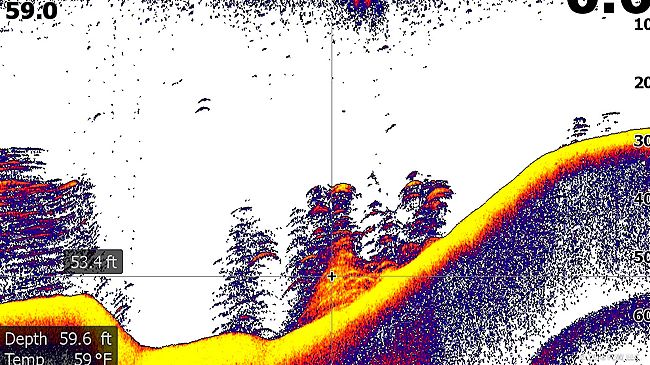
Lanier was flooded in 1956 after Buford Dam was built downstream of the confluence of the Chestatee and Chattahoochee rivers. Before the lake was flooded, portions of the woods were clear-cut so that the trees would top out in 30 feet of water at full pool and not be navigational hazards. Because Lanier is a fairly deep lake, that means there’s a lot of standing timber left over in the deeper sections.
“When the lake was down about 20 feet I went out there, and you wouldn’t believe some of the oak trees out in the water,” says Bone of the standing timber. “That whole timber deal is going to be an interesting factor. Personally, I don’t fish timber; I don’t have the patience. But there are two guys in the field who are locals [Jason Johnson and David Nichol], and if the fish are in the timber good they’re going to be guys to watch.”
Bone says that timber is typically best in the fall, but that the blueback herring like to winter in timber-filled ditches as well.
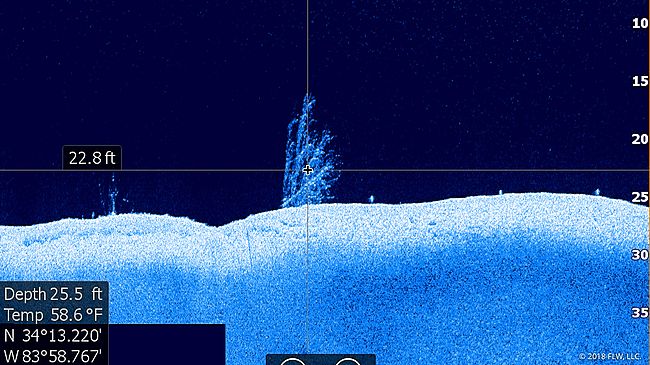
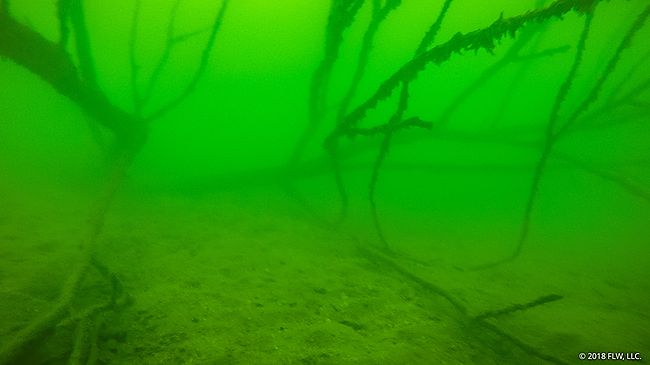
Besides the timber, Lanier’s salient feature is man-made cover. Local anglers have filled the place up with brush and cane over the years, and it’s not at all hard to run across fishy-looking cover. Though there is some rock on Lanier, both offshore and shallow, it’s more common to see a clay or sand bottom accented by some kind of woody cover. In the summer, fishing those piles is a key strategy, and brush has earned folks a pile of money in the Forrest Wood Cups held on Lanier in 2010 and 2012. In the spring, with fish split between eating and thinking about the spawn, brush might not play quite as much, but it’s still a factor to keep an eye on.
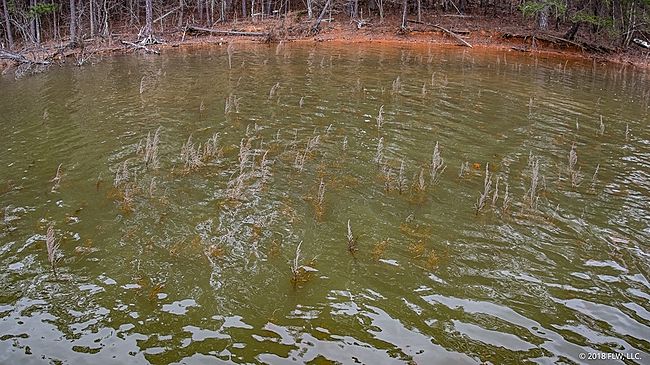
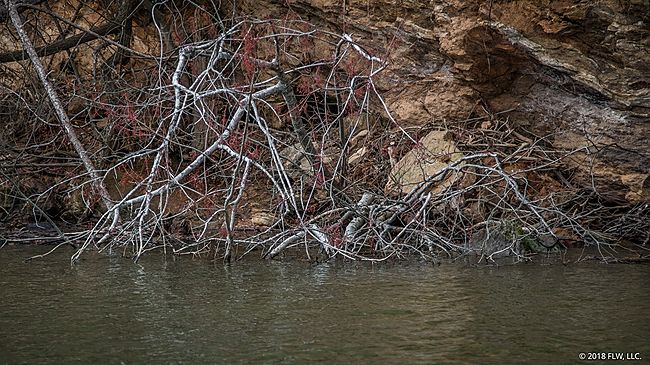
Thanks to recent rains, Lake Lanier is about a foot shy of full pool and rising this week, and you can tell it isn’t usually this full. Along stretches of bank and in the pockets there is plenty of flooded dogfennel, and there is far more water on laydowns and the like than usual.
“This is the fullest it’s been in three or four years,” says Bone, “which is very good to see. There’s no buck brush or really any vegetation on Lanier. What you see is about it. That stuff can be a factor, but I don’t know how much of a factor it’ll be this week.”
Bone’s hesitance to endorse a shallow bite is due more to the weather conditions than the actual cover. With day one of the tournament scheduled to take off in forecasted below-freezing conditions Thursday morning, he’s betting the more stable, deep-water spotted bass bite plays better than a shallow largemouth chase.
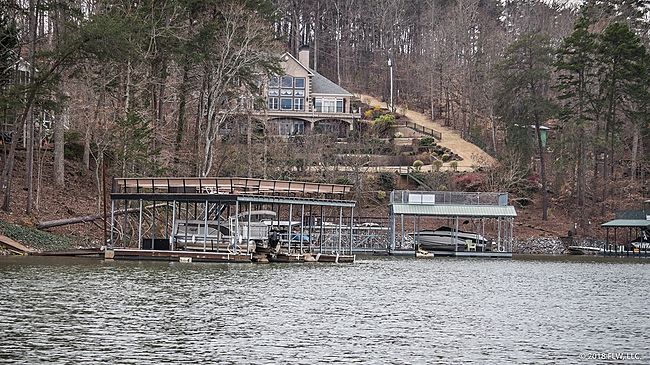
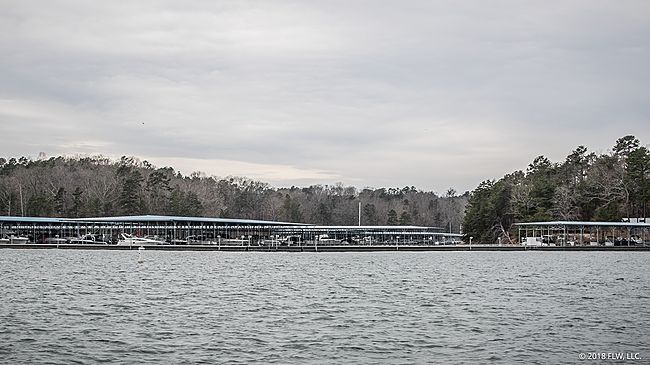
One factor that Lanier has in common with most Southern lakes is an abundance of docks – both private and in marinas. There’s a good chance a lot of fish will come off docks in this tournament. Casey Ashley showed how good key docks with brush can be on Hartwell a few seasons ago when he won with that pattern, and we could see a similar game plan make waves on Lanier.
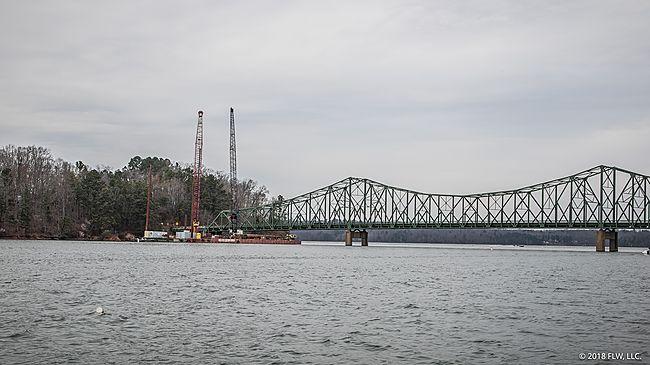
With more rain on the way, you might think that poor water clarity or flooding are legit concerns. Last year at Beaver Lake, huge quantities of rain transformed the tournament, but that’s not going to be the case this time around. Above Browns Bridge the water has a healthy stain, but it’s nice and clear down the lake in the more open main basin. Lanier is big enough and clear enough that it simply eats up dirty water. There could be some blown-out creeks and pockets, but down by the main basin it would take an unfathomable weather system to truly disrupt the conditions.
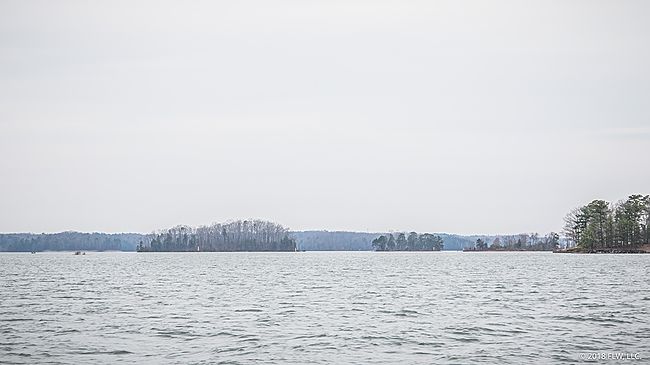
South of takeoff, the lower section of Lanier is likely to get a workout this week. You can really see how big Lanier is when you get down there. It’s dotted with islands and has some big open stretches where the wind and waves could really get cooking given the right conditions. If you’re familiar with Hartwell or Lake Norman, you’ll get incredibly strong familiar vibes in this part of the lake, and it’s going to be the site of a lot of spotted bass action.
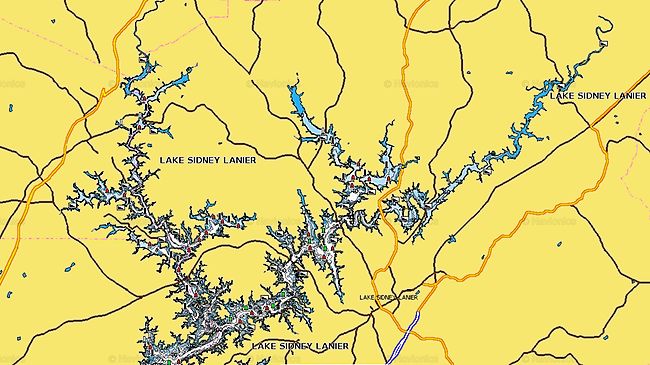
Both the Chestatee and Chattahoochee rivers have excellent names and some bassin’ potential, but they might not play a ton this week. Back in 2012, Jacob Wheeler won the Forrest Wood Cup about as far up the Chattahoochee as you can go in a bass boat, and it’s totally possible to get up there again. Yet, the fishing down in the main lake might simply be too good to bother.
Though both rivers can offer good fishing, they aren’t carbon copies of each other.
“The Chattahoochee is the bigger of the two, and it’s better fishing,” says Bone. “But, even though it’s healthier, it fishes smaller. There are fewer big creeks up the Chattahoochee, but you can run farther up it.”
The creeks of note in the Chestatee are Thompson, Latham and Taylor, and they all have the potential to play. They’re on a smaller scale than the main lake and should be more protected from the elements if the wind really blows down in the main basin. They’re also good places to check out on the hunt for largemouths.
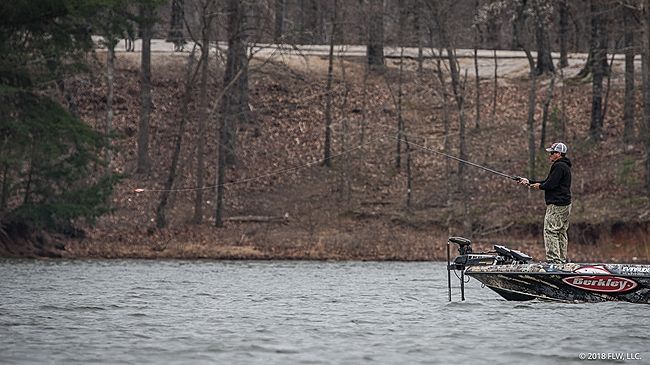
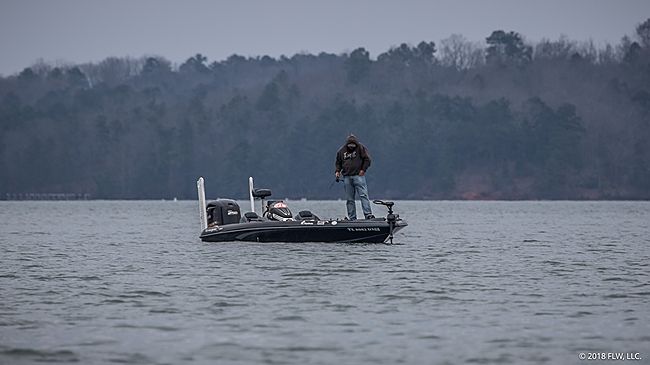
With so much lake to fish and the fish biting so well for just about everyone, winning this tournament is going to require someone to catch them really well. It’s not likely that the winner is going to be hunting a key 2-pounder late in the day. He’ll be hunting a kicker.
With that in mind, maximizing the potential every day will be important. Bone says that really staying on top of the fish is probably more important that fishing a single spot.
“It should fish pretty big. There will be some people rotating the same water, but it’s not like going to Harney Pond [at Lake Okeechobee] and fishing with 30 boats,” says Bone. “You can fish a pattern really well, and it fishes in sections really bad. If you’re doing what should be working and not catching fish, just pick up and change sections. Normally this time of year in the early spring I’ll start in the midsection, but as the weeks progress it’ll move on down. You can follow a pattern down the lake and be fishing the same pattern in a different stretch two weeks later.”
So buckle up because this derby is going to be a slugfest despite the weather, and if you like spotted bass you’re in for a real treat.